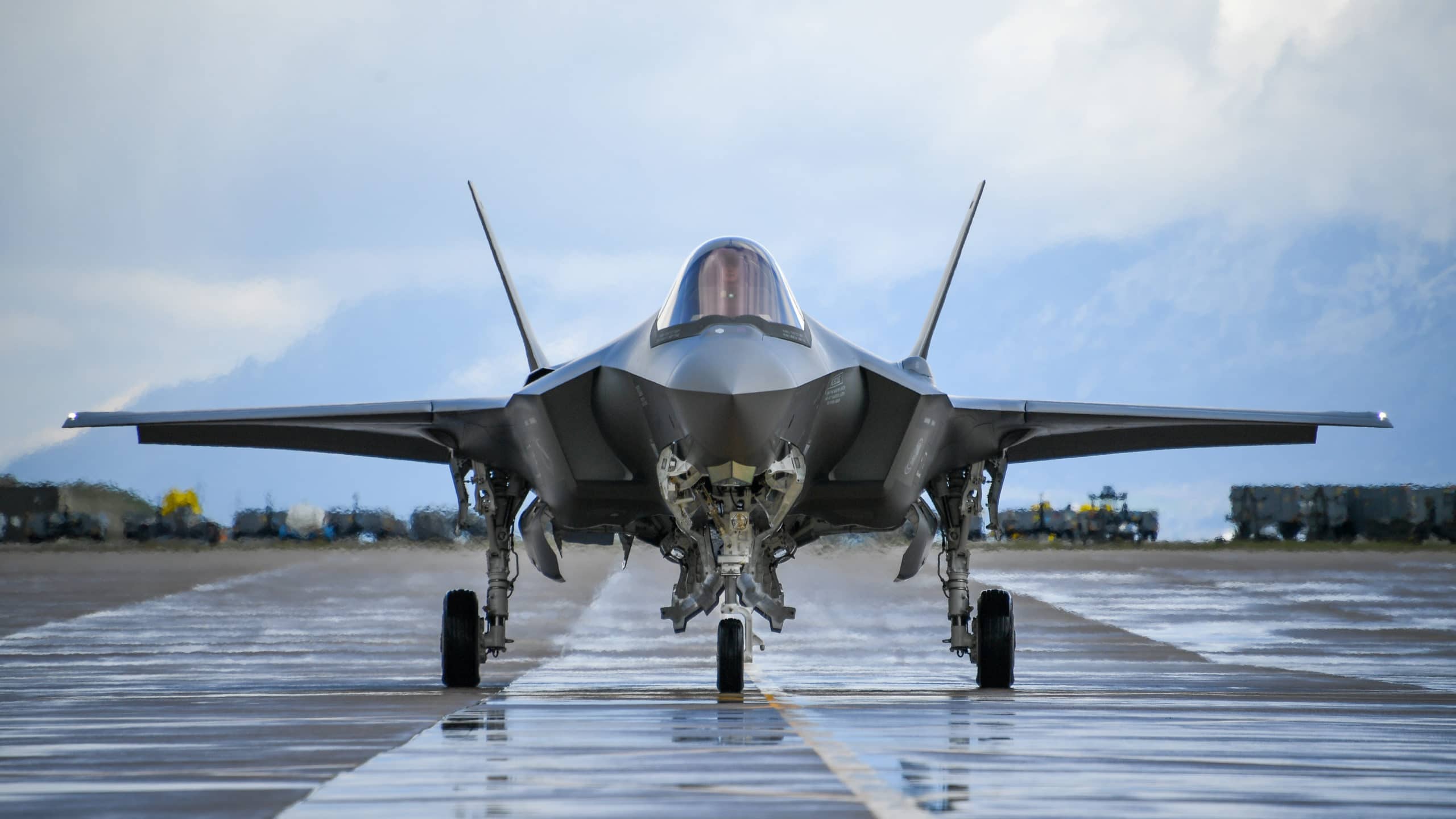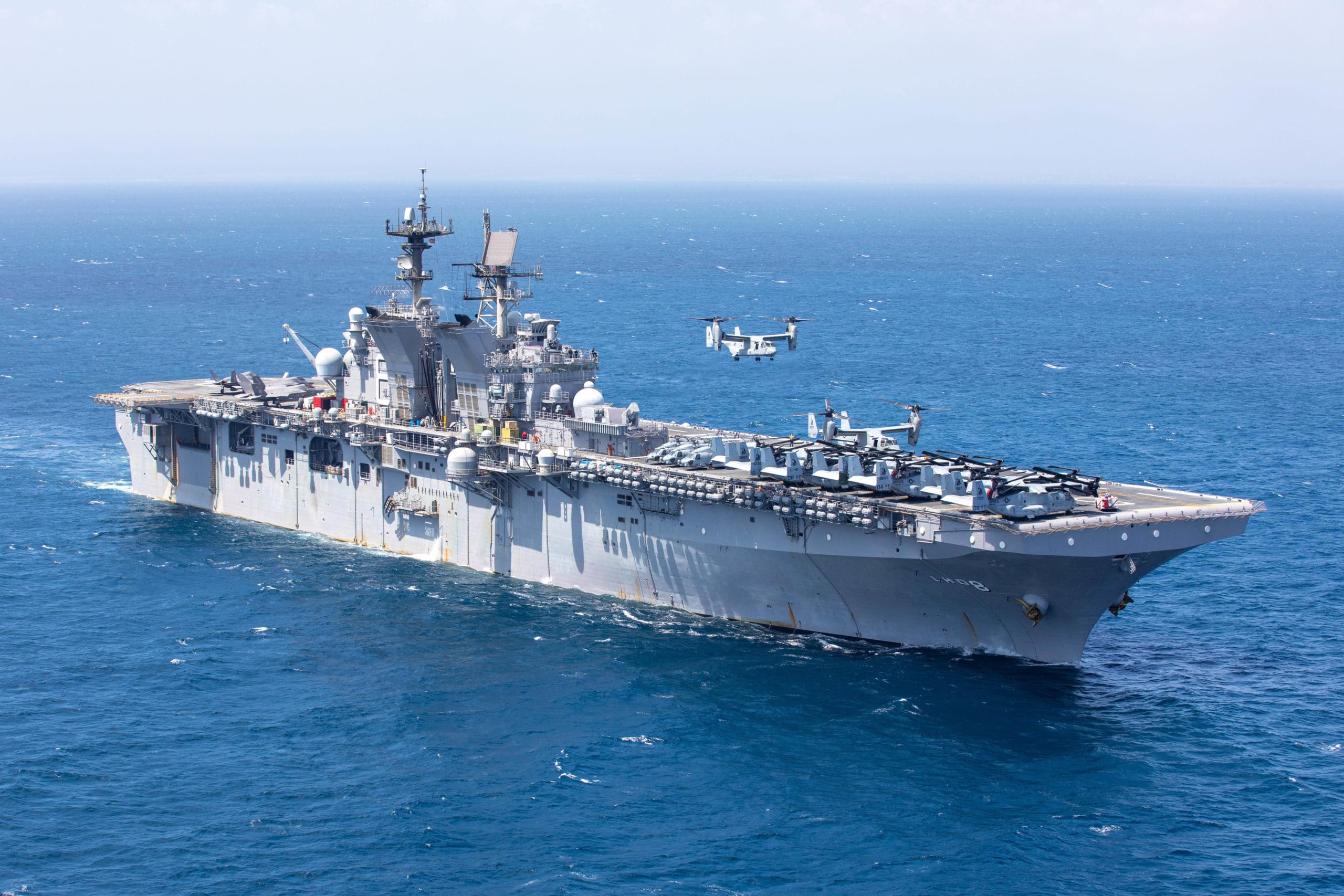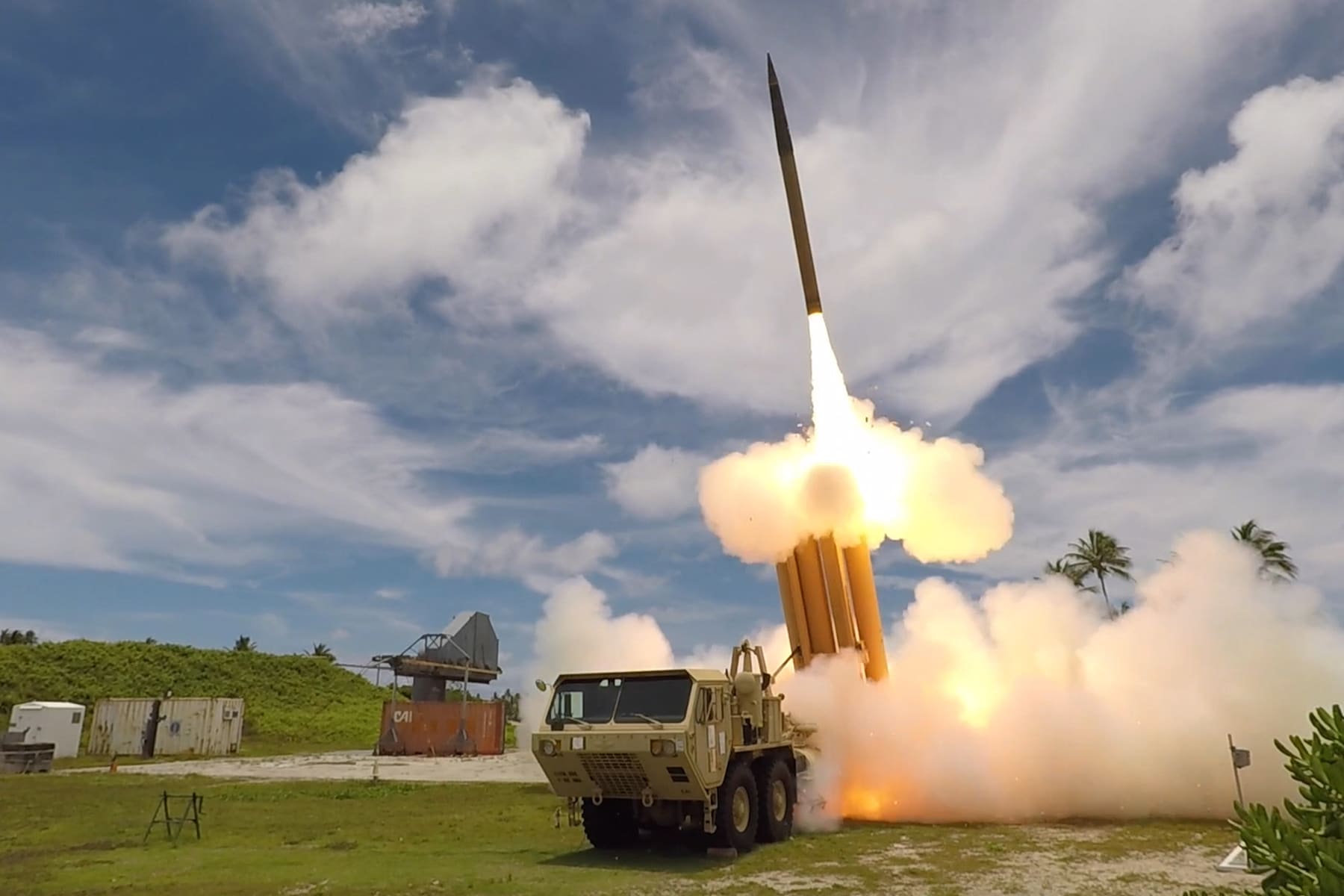January 14, 2021 | From Trump to Biden Monograph
Defense
January 14, 2021 | From Trump to Biden Monograph
Defense
Current Policy
The Trump administration’s National Defense Strategy (NDS) made clear in 2018 that “[l]ong-term strategic competitions with China and Russia are the principal priorities” for the Pentagon.1 The NDS accepted that deterring rogue states and defeating terrorists remained part of the Defense Department’s mission, but suggested the United States had expended scarce time and resources fighting secondary threats.
While the Obama administration’s 2014 defense strategy emphasized “rebalancing to the Asia-Pacific,” it underestimated the severity of the challenges presented by Beijing and Moscow and did not make great power competition the explicit priority.2 Furthermore, both the Obama administration and Congress consistently failed to provide the U.S. military the timely, sufficient, and predictable funding necessary to conduct operations, maintain readiness, and modernize forces.3 Accordingly, the Pentagon confronted a dangerous readiness crisis in 2017.4
Meanwhile, Moscow and Beijing worked to modernize their forces and develop new ways to overcome the United States and its allies on the battlefield.5 “The security and wellbeing of the United States are at greater risk than at any time in decades,” warned the bipartisan, congressionally mandated National Defense Strategy Commission in its November 2018 report.6
To address this increasingly dangerous situation, the NDS declared that the Department of Defense must build a more ready and lethal force able to “deploy, survive, operate, maneuver, and regenerate” in all domains – not just air, land, and sea but also space and cyberspace.7
Anticipating the cost of recovering lost advantages, the Trump administration worked with Congress to raise the Pentagon’s budget from $606 billion in 2017 to $671 billion the next year, yielding inflation-adjusted growth of 8.2 percent. Modest real growth followed in the next two years; President Trump’s final budget request did not keep up with inflation.8
With an emphasis on space and cyberspace, the administration undertook significant reforms to the Department of Defense’s structure. This included elevating U.S. Cyber Command to a unified combatant command in May 2018.9 Notably, however, this step did not prevent a devastating cyber operation against the United States that was revealed to the public in December 2020.10
The administration also created U.S. Space Command in August 2019 and established the U.S. Space Force in December 2019. The establishment of the Space Force gave rise to the first new military branch since the creation of the Air Force in 1947.11
In recognition of the growing technological prowess of potential great power adversaries and the changing character of warfare, the Trump administration prioritized military research and development (R&D), with the Pentagon submitting its largest R&D budget request ever for fiscal year 2021.12 Questions linger, however, about whether the current Pentagon R&D spending is sufficient.13 China’s share of global R&D rose from 4.9 percent to 26.3 percent from 2000 to 2018, while the U.S. share fell from 39.8 percent to 27.6 percent during the same period.14 Key Pentagon R&D areas include “hypersonics, artificial intelligence, quantum science, biotechnology, directed energy, microelectronics, and 5G networks,” according to former Secretary of Defense Mark Esper.15
To ensure the U.S. military can effectively employ such capabilities once fielded, the Pentagon also sought to develop a new warfighting doctrine that seeks to link every sensor, system, and weapon into a seamless network that can expeditiously detect threats, determine how to respond, and deliver the necessary munitions.16 Overall, extensive work remains necessary to restore U.S. military advantages; the success of these efforts will determine the outcome on future battlefields.
Assessment
The Trump administration inherited a U.S. military in desperate need of both conventional and nuclear force modernization and suffering from one of the worst readiness crises in years. Many worried about the growing military power of China, but Washington had no effective consensus on defense priorities.17
To its credit, the Trump administration shifted the Pentagon’s focus to great power competition and worked with Congress to obtain increased funding18 to improve readiness and initiate the most significant U.S. military modernization effort in decades.
In March 2020, Army leaders testified that the service had “successfully rebuilt tactical readiness,” reporting that 74 percent of active-duty brigade combat teams (BCTs) had reached the top levels of readiness.19 Three years earlier, the Army vice chief of staff testified that only three out of 31 active-duty BCTs “could be called upon to fight tonight in the event of a crisis.”20
In addition, the Army established six modernization priorities and more than 30 associated R&D programs that focused on new missiles, combat vehicles, helicopters, networks, air defense systems, and individual soldier weapons.21 Still, in March 2020 congressional testimony, Army leaders cautioned that the service will require “time and patience” as well as “timely, adequate, predictable, and sustained funding” to field these new capabilities.22
Unfortunately, time is short. Indo-Pacific Command assessed in early 2020 that the military balance of power with China continues to become “more unfavorable.” The command warned that the United States is “accumulating additional risk that may embolden our adversaries to attempt to unilaterally change the status quo before the U.S. could muster an effective response”23

An F-35A Lightning II taxies during a combat exercise at Hill Air Force Base, Utah, on May 1, 2019. (U.S. Air Force photo by R. Nial Bradshaw)
The Trump administration sought and received significant defense funding increases for 2018 to strengthen the U.S. military, but real growth in the defense budget was negligible or nonexistent since then – falling well short of the 3 to 5 percent real annual growth recommended by the bipartisan National Defense Strategy Commission.24
To make an effective case for robust defense spending, the Pentagon will need to exercise strong financial stewardship25 and resolve lingering audit challenges.26 That would help undercut the fiction that cutting Pentagon waste and inefficiency can yield massive savings that safely enable large cuts in defense funding.
The Pentagon will certainly need robust funding to address continued challenges in the Air Force and Navy without dangerously slashing the size of the Army.27
Despite improvements since 2017, the Air Force’s inventory of aircraft remains too small, too old, and too busy – consistently struggling to achieve adequate aircraft mission-capable rates.28 Similarly, America’s naval fleet is far too small, lacking the capability and lethality that the United States will need to deter and potentially defeat an increasingly capable Chinese military.29 With approximately 85 percent of the joint force based in the continental United States, the Department of Defense lacks sufficient air refueling and sealift capacity; this endangers its ability to deploy forces with sufficient speed in a contingency.30 Additionally, it remains to be seen whether the Space Force will add military capability or simply redundant bureaucratic infrastructure.

A U.S. Marine Corps MV-22 Osprey assigned to Marine Medium Tiltrotor Squadron (VMM) 164 (Reinforced), 15th Marine Expeditionary Unit, lands on the flight deck of the amphibious assault ship USS Makin Island. (U.S. Navy photo by Mass Communication Specialist 2nd Class Jacob D. Bergh)
Despite significant progress in building combined readiness with America’s allies and partners at the tactical and operational levels, Trump pursued a number of burden sharing efforts and military withdrawals that harmed America’s strategic alliances and security.31
At home, in an action that damaged civil-military relations, Trump used the National Guard on June 1, 2020, to aggressively clear from Lafayette Park peaceful protesters exercising their constitutional rights.32
Recommendations
- Maintain robust defense funding. To fund current operations, advance vital modernization programs, and avoid a repeat of the 2017 readiness crisis, the Biden administration should seek real growth in the defense budget each year. This level of defense funding is both necessary and affordable.33
- Solidify America’s alliances. The Biden administration should seek to heal and strengthen alliances that have been damaged in recent years, with a particular focus on NATO. The Biden administration should halt most of the Trump administration’s military withdrawal plans from Germany and task the Pentagon with conducting a new assessment of the U.S. military posture required in Europe with a focus on readiness, alliance unity, and deterrence.34 That said, the incoming administration should continue to push allies to invest more in defense while jettisoning Trump’s ill-advised approach to “burden sharing” with countries such as Germany and South Korea.35
- Strengthen defense R&D with allies. The United States confronts an intense military technology competition with China and Russia. To win this competition, the Biden administration should establish more effective and systematic military R&D partnerships with tech-savvy democratic allies. That should include a U.S.-Israel Operations-Technology Working Group,36 authorized in Section 1299M of the National Defense Authorization Act for Fiscal Year 2021.37
- Strengthen U.S. military posture in the Indo-Pacific. The growing military capabilities of China’s People’s Liberation Army require the United States – along with regional allies and partners – to undertake a series of doctrinal developments, capability investments, and posture adjustments in the Indo-Pacific.38 The Biden administration and Congress should fully support and fund the Pacific Deterrence Initiative, which would help address a number of serious shortfalls in the region, including those related to infrastructure and logistics.39
- Avoid timeline-based withdrawals from the wider Middle East. The Trump administration initiated timeline-based troop withdrawals in Afghanistan, Iraq, and Syria that dangerously ignored the advice of commanders, persistent threats, and conditions on the ground. The Biden administration should halt ongoing withdrawals from the wider Middle East and conduct a thorough review of what force posture U.S. interests require in each country.40 A terrorist surge resulting from the withdrawals would not only endanger Americans but would also jeopardize efforts to prioritize the long-term threat posed by China.41
- Continue robust arms sales programs. The Biden administration should continue and expand arms sales where it serves U.S. interests,42 including to NATO partners in Europe and to partners such as Taiwan43 and India in the Indo-Pacific. In the Middle East, Washington should seek to build a more unified and militarily capable coalition to check the Islamic Republic of Iran, while preserving Israel’s qualitative military edge and adhering fully to the law.44

A Terminal High Altitude Area Defense, or THAAD, interceptor missile launches during a flight test at the Ronald Reagan Ballistic Missile Defense Test Site in the Marshall Islands on August 30, 2019. (Courtesy photo via Department of Defense)
- Improve America’s missile defense capabilities. The missile threat to the United States and its deployed forces continues to grow.45 The Biden administration should sustain efforts to strengthen American homeland and theater missile defenses. That should include continued improvements to the Ground-Based Midcourse Defense system, as well as efforts to capitalize on the successful November 2020 test of a Standard Missile-3 Block IIA interceptor against an intercontinental ballistic missile.46 Congress should also support U.S. Indo-Pacific Command’s request for a “360-degree persistent and integrated air defense capability in Guam.”47
- Continue modernizing the U.S. nuclear triad. As Russia and China modernize their nuclear triads, the Pentagon is undertaking a vital and long-overdue effort to modernize all three legs of America’s nuclear triad, including the Ground-Based Strategic Deterrent, the B-21 bomber, and the Columbia-class submarine.48 The Biden administration should continue these modernization efforts and Congress should provide the necessary funding.49
